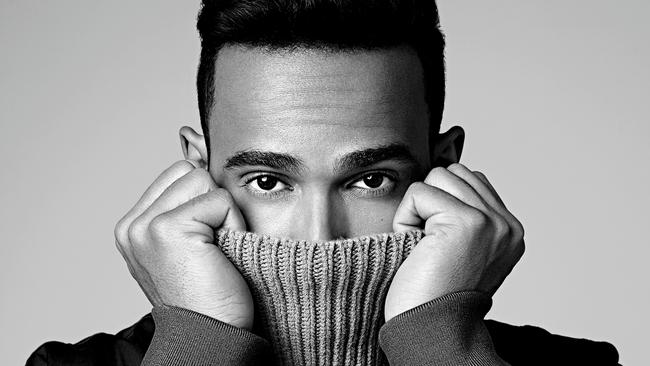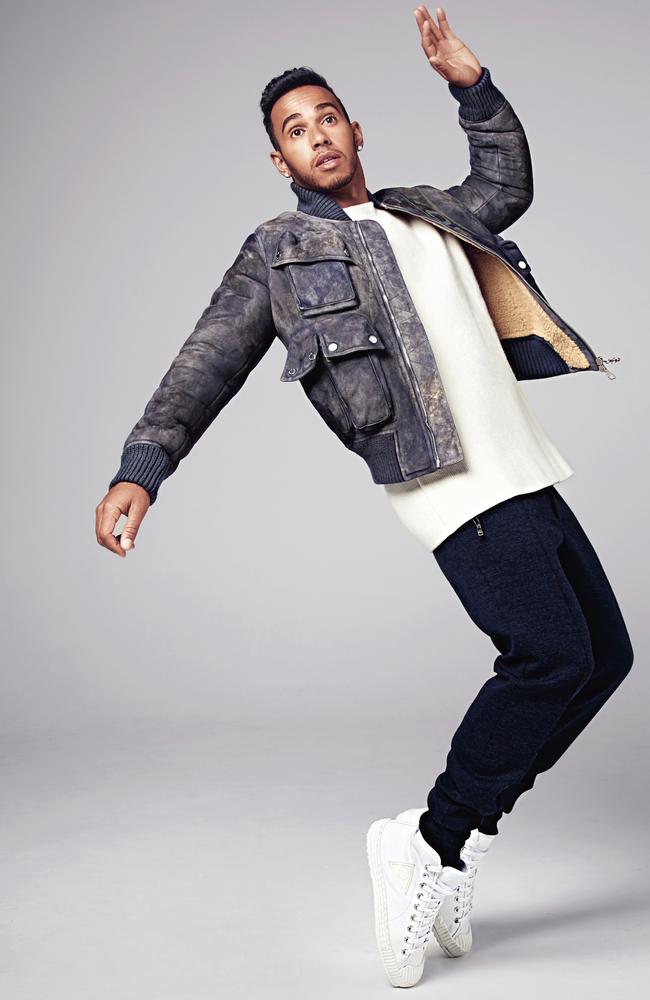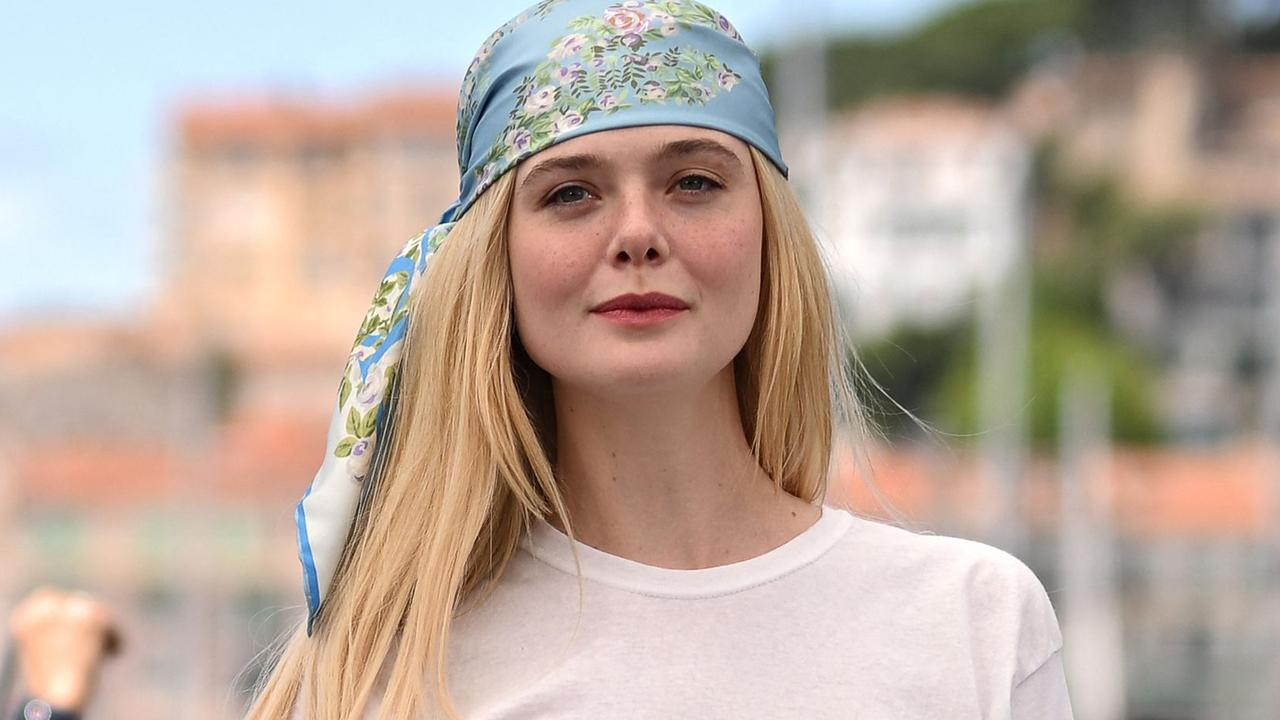Lewis Hamilton’s on track for Formula One glory yet again
SIXTEEN years ago, he was a teenage go-karting champion. Today, Lewis Hamilton has three world titles under his belt and all eyes will be on him when he heads to Australia for the Grand Prix.

Stellar
Don't miss out on the headlines from Stellar. Followed categories will be added to My News.
IN 2001, I phoned a teenager in Britain to talk about cars and driving. He was still some years away from obtaining a driver’s licence, but even then it was clear this was a kid who had something far more valuable. Pure talent. He was fast. Blindingly so.
He’d won several championships in karts, the little motorcycle-engined devices that are stepping stones to larger, more rapid-racing machinery. And he’d already planned his course to the pinnacle of global motorsport, saying he aimed to be in Formula One by the time he was 22 or 23.
True to his word, Lewis Hamilton competed in his first F1 grand prix in 2007 at the age of 22 years, two months and 11 days. Against a vastly more experienced field, Hamilton won a podium trophy in that first race. Clearly, he began as he meant to continue.
During 187 subsequent grands prix, Hamilton has scored 61 pole positions, set 31 fastest laps, achieved 53 wins and landed three world titles. No other driver on the grid at this month’s season-opening Australian Grand Prix in Melbourne can match his astonishing recent record. During the past three years, Hamilton has won two championships and finished second in a third-title battle.
There is also the matter of his personal fortune, estimated to be somewhere north of $200 million. Not bad for a kid from Stevenage, Hertfordshire, who 16 years ago was worried about his French homework.

It might be time for another chat. Obviously, Hamilton is no longer in Stevenage, and it is no longer possible to find him by simply dialling the Hamilton home. Sixteen years on and this time he’s in Spain, at the Circuit de Barcelona-Catalunya, testing his 2017 Mercedes-AMG F1 W08 EQ Power+ ahead of that crucial first race in Melbourne.
Hamilton still has the same gentle laugh and wry manner he had as a teenager, and still answers questions in the same immediate but considered way.
Like former Australian fast bowler Glenn McGrath, who is reputed to be able to recall in minute detail every single one of his 563 Test wickets, he also has a phenomenal memory. In a data-driven pursuit like F1 racing, this gives him a huge advantage.
One moment early on in his very first season, 10 whole years ago, first alerted motorsport observers to the fact Hamilton had abundant tactical racecraft to go with his raw pace. He’d been stalked for several laps by a rival driver whose first overtaking attempt had failed. Hamilton knew his attacker would try again, most likely on the following lap at the same corner. And he did.
But Hamilton was ready. Through his tiny rear-vision mirror, he saw the faster car advancing on his right. He also picked up that the car was travelling far too quickly to make it through the upcoming right-hand curve. So Hamilton, in just his second race, deftly stepped aside and let his challenger spear helplessly off the track.
It was the best move of the race, and Hamilton barely moved at all.
“Felipe Massa at Malaysia,” Hamilton says instantly when asked by Stellar about this long-ago battle. At that point of his career, the future world champion — Hamilton claimed the title in 2008, 2014 and 2015 — had driven just 64 Formula One laps under race conditions. Yet he recalls the incident precisely. Not much gets past him, including a certain Brazilian Ferrari driver at turn four in Sepang.
“That racecraft stuff I learnt in karting,” Hamilton says, amused by the idea that a tactic that works in tiny single-cylinder machines is just as effective in 900-horsepower F1 cars. “Do you remember Bahrain in 2014?” I don’t, but you can bet Hamilton does. “I did the same thing to Nico Rosberg lap after lap. He fell for it every time.”
Hamilton beat his Mercedes teammate in that race, but lost last year’s title to Rosberg following a slow start to the season and multiple mechanical problems as the year unfolded. Actually, “teammate” is the wrong term. Although they were both Mercedes drivers, Hamilton and Rosberg were barely on speaking terms after several on-track collisions.

It all ended in bizarre circumstances at the 2016 season finale in Abu Dhabi, where Hamilton needed a victory to secure his fourth world championship. Rosberg, seeking his maiden title, needed only to finish higher than fourth. Leading the race from Rosberg, Hamilton put in action a controversial strategy. He gradually ran slower and slower in a bid to drag Rosberg into the clutches of lower-placed contenders.
It didn’t work, and discussion of the Hamilton-Rosberg rivalry results in the only one-word answer of our interview. When France’s Alain Prost retired from Formula One in 1993, his most ferocious competitor, the late Brazilian F1 hero Ayrton Senna, contacted him to plead for his return. Senna knew he’d miss their brutal struggles. Has Hamilton made any phone calls lately to Rosberg’s Monaco residence, following Rosberg’s own retirement last year at just 31? “No.” OK then. Let’s move on.
The last British driver to win three world titles was Jackie Stewart, just as much a pop-culture figure in his day as he was a racing driver. Stewart hung out with The Beatles and movie stars. He appeared in a George Harrison film clip as a chauffeur. For this, he was rightly regarded as an ambassador for motor racing, bringing Formula One to a broader audience.
Yet Hamilton is just as much a pop-culture figure, having dated The Pussycat Dolls singer Nicole Scherzinger for eight years and been romantically linked with Keeping Up With The Kardashians star Kendall Jenner and even Rihanna (“We’re friends,” Hamilton insists). In between winning world championships, Hamilton has also long chased a music career.

Instead of being celebrated, however, currently single Hamilton finds himself frequently criticised for trying to be “bigger than motor racing”. It’s a bewildering charge.
“I don’t know why they’re hating on me,” he says, more mystified than angry. “Why do they say it? And why do they keep saying I’m a rapper? I’m a singer. I love R’n’B.”
His other primary interest outside of Formula One is fashion. Hamilton may be the only multiple F1 world champion in history who is equally at ease discussing fabrics, cuts and colours with clothing designers, as he is working through tyre temperatures, downforce levels and gear ratios with his Mercedes engineers.
Anyone keen to secure an audience with Hamilton during his time in Australia will be best placed if they are armed with fine fashion contacts rather than with F1 statistics.
Or else they might come armed with a deep knowledge of Barbados, Hamilton’s favourite non-F1 zone. “I feel most at home there,” he says. “I’m more comfortable there than anywhere else in the world. Every year I try to get to Barbados.”
Hamilton’s grandparents are from Grenada, and the triple world champ has a gigantic support base throughout the Caribbean. If you want to see the most relaxed F1 driver ever, just search for social media shots of Hamilton at Barbados’s annual Crop Over festival. There are no security guards, no PR people, no pit walls. Just Hamilton and an island of people who are both admiring and protective of him.
Interestingly, the 32-year-old raises unbidden the subject of retirement. “This sport is not what my life is about,” he says. “When I stop, the sport will go on.” It will go on without any input at all from Hamilton, who doesn’t care to attend races as an ex-driver. “I want to go on and be challenged by something else.”
This all sounds a little like someone planning to quit Formula One if he wins a fourth world title in 2017. One way to keep him might be to revert to previous F1 regulations. Despite his recent success, Hamilton is not a fan of current semi-automatic, turbocharged, electronically assisted, power-steered Formula One cars. “Give me three pedals,” he begs, “and a gearshift.”
Hamilton even mentions his fondness for heel-toe downshifting, a combined gear-change and braking method not known in F1 for decades. For someone born in 1985, Hamilton is one historically-aware triple-pedal dude. At the same time, he is also grateful for the life he’s led. “I grew up in Stevenage,” he observes from Spain, prior to further pre-season testing. “I have to pinch myself.”

At 32, he’s obviously looking at moving on, yet the addictive ferocity of motor racing will be difficult to shake. Perhaps Hamilton, after F1, will return to the level that eventually promoted him to global fame. “Karting is definitely the best form of racing,” he tells Stellar, sounding wistful. “It’s the rawest form of motor racing by far.”
Hamilton will bring that lifelong lust for raw competitiveness to Melbourne for the first grand prix of the 2017 season. Fans should treasure it. We’ll see someone who wants to win through strategy, guile and sheer innate force of nature.
Lewis Hamilton is aiming for victory, just as he was in 2001.
The 2017 Formula 1 Rolex Australian Grand Prix runs from March 23—26
Originally published as Lewis Hamilton’s on track for Formula One glory yet again



